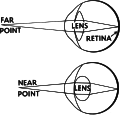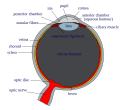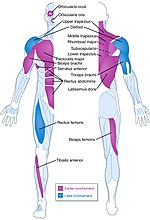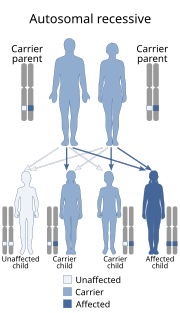Search results
Appearance
The page "Shortening of eye muscles" does not exist. You can create a draft and submit it for review or request that a redirect be created, but consider checking the search results below to see whether the topic is already covered.
- contraction does not necessarily mean muscle shortening because muscle tension can be produced without changes in muscle length, such as when holding something...62 KB (7,395 words) - 14:24, 5 October 2024
- agonists during shortening. This term typically describes the function of skeletal muscles. Antagonist muscles are simply the muscles that produce an...20 KB (2,285 words) - 03:32, 6 September 2024
- skeletal muscle than women. Most muscles occur in bilaterally-placed pairs to serve both sides of the body. Muscles are often classed as groups of muscles that...120 KB (13,834 words) - 17:29, 6 October 2024
- muscle, and iris sphincter muscle are types of smooth muscles. The iris dilator and sphincter muscles are contained in the iris and contract in order to...37 KB (4,736 words) - 23:58, 3 October 2024
- Strabismus (redirect from Cast of the eye)attempts to align the eyes by shortening, lengthening, or changing the position of one or more of the extraocular eye muscles. The procedure can typically...48 KB (5,102 words) - 14:14, 16 September 2024
- using less uniform muscles rather than subtly changing the shape of the lens itself using circularly arranged muscles. Varying forms of direct experimental...39 KB (4,664 words) - 16:06, 4 October 2024
- Lens (vertebrate anatomy) (redirect from Lens of the eye)as do cartilaginous fish, the muscles involved are not similar in either type of animal. In frogs, there are two muscles, one above and one below the lens...53 KB (6,529 words) - 01:16, 9 September 2024
- Tonic (physiology) (section Tonic muscles)cessation of stimuli, and maximal shortening velocity. These muscles are rarely found in mammals (only in the muscles moving the eye and in the middle ear), but...3 KB (312 words) - 08:25, 1 October 2024
- Arthrogryposis (category Congenital disorders of musculoskeletal system)one or more joint contractures have abnormal fibrosis of the muscle tissue causing muscle shortening, and therefore are unable to perform active extension...35 KB (3,588 words) - 19:20, 22 July 2024
- Accommodation reflex (category Eye)controlled by ciliary muscles inside the eye. Changes in contraction of the ciliary muscles alter the focal distance of the eye, causing nearer or farther...9 KB (1,097 words) - 08:58, 9 May 2024
- Cat anatomy (redirect from Deeper muscles of the neck and back (cat))intercostals are a set of muscles sandwiched among the ribs. They interconnect ribs, and are therefore the primary respiratory skeletal muscles. They are divided...48 KB (6,042 words) - 15:09, 18 October 2024
- Torticollis (category Ailments of unknown cause)prolonged period of muscle contraction. Any of these mechanisms can result in a shortening or excessive contraction of the sternocleidomastoid muscle, which curtails...39 KB (4,515 words) - 18:24, 29 September 2024
- paralyzes injected muscles. Paralysis is temporary, and it might seem that injections would always need to be repeated, except that muscles adapt to the lengths...23 KB (2,689 words) - 16:31, 20 May 2023
- Bates method (section Causes of sight problems)improving eyesight. Eye-care physician William Horatio Bates (1860–1931) held the erroneous belief that the extraocular muscles effected changes in focus...45 KB (4,728 words) - 04:46, 14 May 2024
- Fibula (redirect from Head of fibula)them leverage and multiplies the muscle force. It provides attachment points for the following muscles: As much of the fibula can be removed without...14 KB (1,787 words) - 12:35, 5 September 2024
- Scleral reinforcement surgery (category Disorders of ocular muscles, binocular movement, accommodation and refraction)in early literature aimed at shortening the length of the eyeball by resecting a ring of sclera from the equator of the eye. Later procedures focused on...10 KB (1,284 words) - 02:25, 10 October 2023
- ALS (redirect from Extraocular muscles and ALS)development of weakness of the respiratory muscles, with the loss of ability to cough and to breathe without support, that is ultimately life-shortening in ALS...131 KB (14,038 words) - 11:12, 29 September 2024
- the corresponding mimetic muscles lose their ability to contract. This may lead to several symptoms such as incomplete eye closure with or without exposure...23 KB (3,110 words) - 15:51, 7 November 2023
- muscles of the face, those that position the scapula, and those overlying the humerus bone of the upper arm. These areas can be spared, and muscles of...174 KB (16,320 words) - 17:58, 13 October 2024
- Congenital muscular dystrophy (section Musculoskeletal examination of congenital muscular dystrophies)muscle tone which can delay walking due to being weak, also paralysis of eye muscles and intellectual disability which affects an individual's way of...34 KB (3,524 words) - 14:14, 13 August 2024
- of origin of this reflex tonus of the skeletal muscles. Striped muscles possessing an autochthonous tonus appear to be the various sphincter muscles.
- far as, having shown us the course of ordinary evolution, it also puts before us and advises a method of shortening that course, so that by conscious effort
- supplement metabolism). Muscles co-opted to other non-original functions: sharks detect electrical field created by fish muscles. Some fish formed electric


















